When Timonthy Kinkead surveys 20th century history in his high school social studies class, discussions of the Cold War invariably conjure images of cloaked spies working behind the Iron Curtain in a cat-and-mouse game to steal state secrets or decipher coded communiques in the name of US or Soviet supremacy. Perhaps it's fitting, then, that his students are completely unware that their teacher is also a Spy Hunter himself.
Not that Tim's pasttime is a state secret. After years in the proverbial wilderness, Tim found his way back to arcade games. That interest, in turn, brought him to Twin Galaxies where he found records stretching back to the era of Ronald Reagan, neon colors, and spandex. His own recent progress on his favorite game was approaching 900,000 points, piquing his interest in what qualified as a world record.
All he had to do was crack a 35 year old mystery first.
FAST & FRIENDLIES OR BUST
In case there was any doubt, Tim is not the kind of spy hunter found in a 1960s John le Carré espionage novel. More modestly, he was the type that hunted for the best arcade games in 1980s suburban Pittsburgh.
The arcade landscape of that time offered plenty of opportunities for the video-game obsessed - the local mall had an arcade, and store owners were happy to split the profits with route operators who placed games in all of the mini-marts throughout town.
"Above all others," recalled Tim, "was the local mini-mart called Fast & Friendlies. They had a little game area of around six to eight games and a tremendous penny candy section."
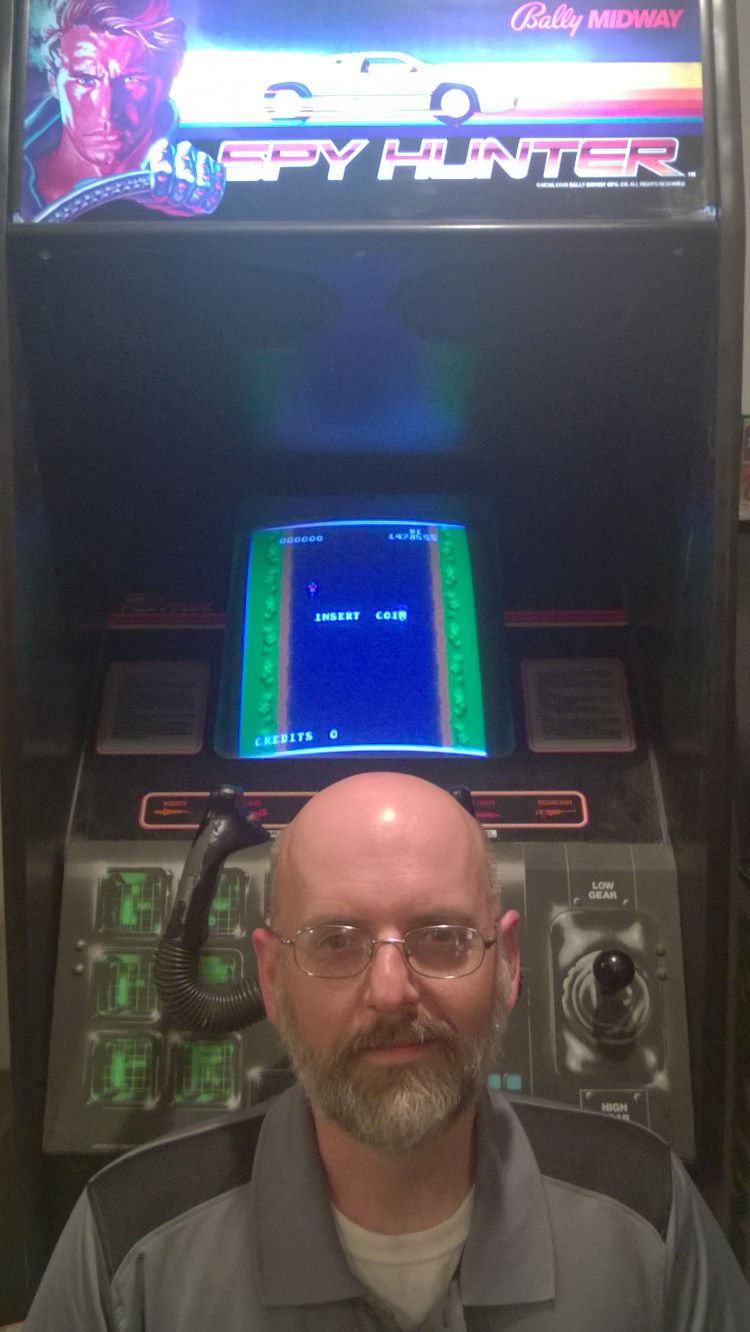
What else was a kid supposed to do except round up his friends with their BMXs and head to the mini-mart all summer along? So off Tim went, trading quarters for gobstoppers and games like Excitebike, Rampage, Gauntlet, and Cheyenne. But among those Fast & Friendlies games, one stood out from the rest.
"Playing Spy Hunter in that location was what got me hooked for life," he said.
A SPY WITH STYLE
Created by fabled game designers George Gomez and Tom Loen, the 1983 Bally Midway arcade release Spy Hunter puts the player in control of a slick and futuristic car known as the G-6155 Interceptor. Armed with an array of weapons at your fingertips, your mission is to steer your vehicle through a vertical-scrolling terrain destroying or avoiding a cast of vehicular enemies with names like Enforcer, Switch Blade, and Mad Bomber. In other portions of the game, the Interceptor can change into a go-fast boat to navigate washed out bridges and danger-filled waterways.
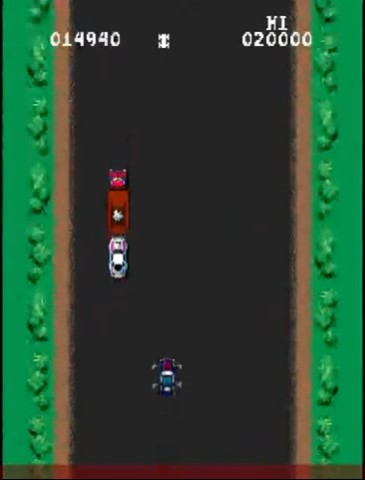
During the game, players can periodically summon a "Weapon's Van" that outfits the Interceptor with advanced offensive capabilities. After an initial period where the supply of Interceptors is unlimited, the game reverts to a "limited lives" format where the player has a finite number of cars. The loss of all vehicles ends the mission.
The title was originally planned as a James Bond release with the famous Bond theme playing through the game, but difficulties in securing a licensing deal prompted George and Tom to literally shift gears. 007 may have been terminated, but the 80s Spy vibe remained along with a retooled soundtrack around an electronic arrangement of Henry Mancini's theme for the American private eye television series Peter Gunn. An instant classic was born.
ALMOST FATE
In Tim's case, Fast & Friendlies eventually moved on from the arcade craze, but that didn't mean giving up on his favorite game. In fact, the search brought him to the ultimate kind of Spy Hunter.
"As I got older, I discovered another arcade outside of Beaver Falls, PA, that had the sit-down version," he explained.
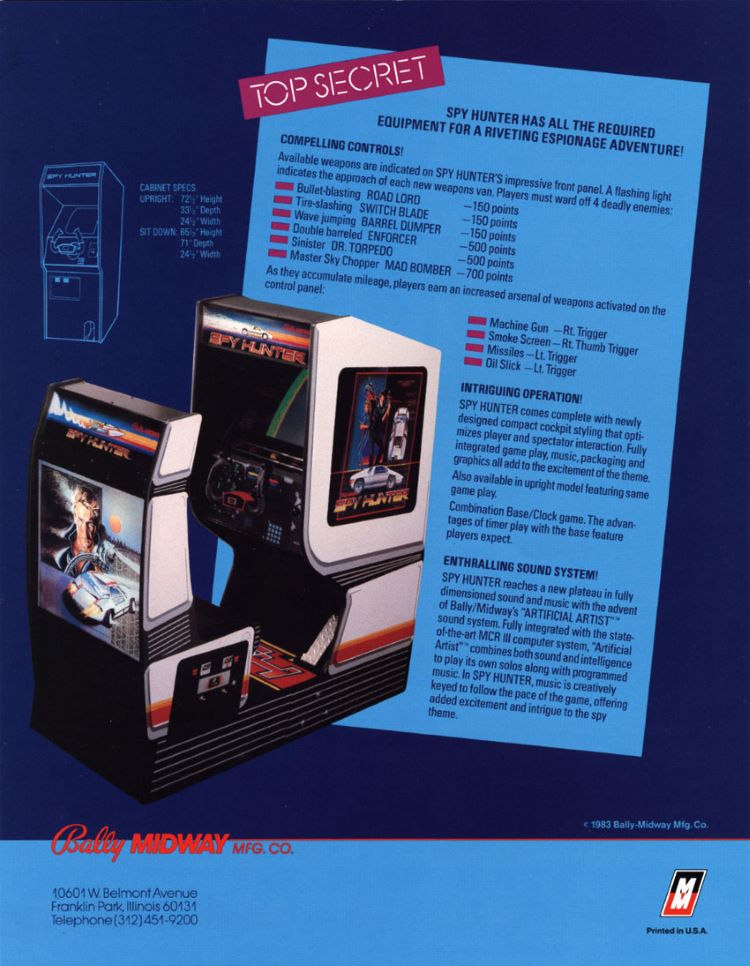
By way of explanation for the uninitiated, a sit-down cabinet was always the best ride for any arcade driving game. In addition to making a pimply teenager look a little cooler, the cabinet always took up more space and attention on the arcade floor. And for anyone who was serious about maximizing their high score, a sit down simply offered more comfort and more control over the on-screen vehicle.
Through college in the 1990s and early 2000s, this cabinet became not only Tim's second car but his second home, both for pure entertainment and also for a welcome diversion while he awaited for the completion of his grandfather's kidney dialysis. So it seemed like fate when, a few years later, the machine was up for sale.
But sometimes fate doesn't get the timing right.
"I almost bought that exact machine for $800," he said, "but I was just married and didn't have the money to spend at the time."
It was a missed opportunity that Tim regretted, and looking back years later, vowed to change.
THE SPY HUNTER'S RETURN
Like many Gen Xers, the turn of the century brought new priorities for career and family for Tim. But as much as preoccupations took him away from competitive gaming, improved finances and growing stability offered him the chance to realize a dream.
Last summer, Tim and his family visited Pinball PA, a vintage arcade museum in in Aliquippa.

"In passing, I asked the arcade owner if he had a Spy Hunter machine for sale," recalled Tim, not completely prepared for the answer. The arcade owner didn't miss a beat, inviting Tim to follow.
"We walked over to a stand-up [Spy Hunter] machine," Tim said. "He told me the price, and I instantly started thinking that this must be fate."
And a second chance.
A month later, Tim was helping the movers guide the machine through his house into the family room. The Spy Hunter was back.
THE ROAD TO A WORLD RECORD
After almost 40 years, Tim could finally relive some of those Fast & Friendlies moments.
"Arcade games are special to me because they remind me of my youth," Tim reflected as he shared memories of pleading for one last quarter from mom or his grandparents so he could be immersed in the sights and sounds one last time. "[But] owning the machine is what made the competition possible for me because I would have never been able to pick up on the various game nuances or try new strategies if I had to go to the arcade to do so."
New world records, though, weren't the first thing on Tim's mind.
"I was approaching the Mark Little score of 832,000 and realized that my skill and analysis of the game was making a score over 1 million a possibility," Tim revealed. It was this process of analyzing and examining play technique that captivated Tim's interest, pushing him deeper into the game's mechanics rather than a singular focus on besting the world record.
By January 2021, Tim's focus led to his first million point game, a significant milestone in the history of competitive play. Only one other player had claimed a million point game in recent memory, and he held a world record that was nearly 10 times higher dating back to 1985.
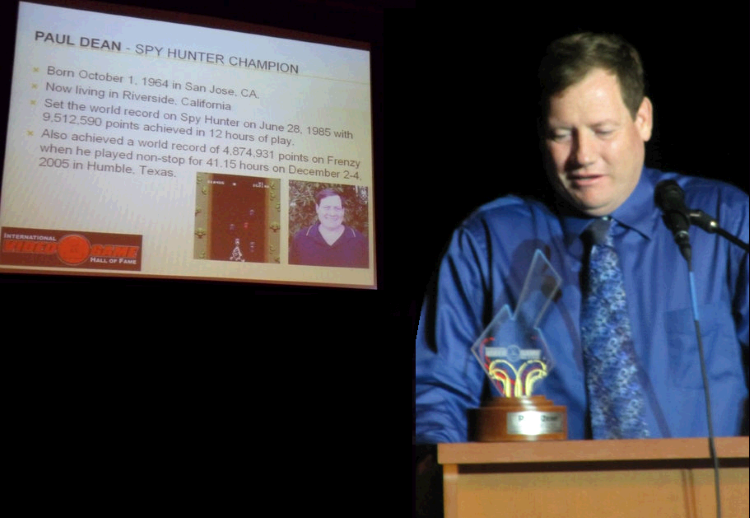
That player was Paul Dean, who made his mark with a score of 9,512,590 achieved during 12 hours of game play at the annual Video Game Masters Tournament (VGMT) on June 28, 1985. By achieving the high score, Paul qualified to have his name and result reported in the 1986 edition of the Guinness Book of World Records. Ten years later, Paul's score would also be printed in the 1997 edition of the Twin Galaxies' Official Video Game & Pinball Book of World Records. Paul would add another feather to his cap with a 41 hour marathon game of Frenzy, where he hit 4,874,931 points. In 2010, Paul's achievements were recognized by the International Video Game Hall of Fame when he was inducted as part of the inaugural class.
However, sometime in the early 2000s, Twin Galaxies had rescinded Paul's score and in 2003 recognized Mark Little as the world record holder on Spy Hunter with 832,620 points. When he learned of his removed score, Paul protested the decision, leading to TG policy pronouncements, possible legal intervention, procured witness statements, and finally a deliberation among TG referees leading to the reinstatement of Paul's score in 2004. No one had cracked a million points on the game since then without the use of glitches, tactics that were banned in the contemporary rule set for the game.
DECODING ADVANCED PLAY ON SPY HUNTER
Tim was intrigued by the debate around Paul's score as well as its dominant position on the leaderboard.
"Part of me has always been attracted to mysteries and problem-solving activities," Tim shared, pointing to his interests as a board gamer, reader, and love of a good debate. "The Spy Hunter 9.5 million point score fell right into my wheelhouse because I love the game, I am pretty good at it, and I love mysteries."
Tim's interest was further reinforced when Twin Galaxies rejected his original million point video submission. At the time, Tim wasn't anticipating his record-breaking run so his son was mobilized at short notice to record the last part of his game. By contrast, scores from earlier eras of competitive gaming were verified with witnesses or referee statements, reflecting the relative unavailability of video equipment to the average gamer at that time. The experience provided Tim with a sharp focus for his research in unlocking the secrets of Spy Hunter.
Using his TG community wall, Tim went to work by posting results of his analysis and breakdown of his research methodology - complete with video recorded game play - for wider discussion and debate, all the while striving to push his own record to greater heights.
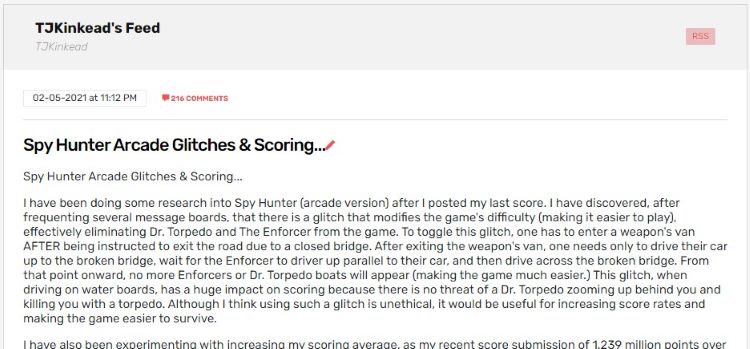
"Although I wish I had a great Rocky training montage story to share, I really just played in the evenings once everyone was settled in for the night," he said, crediting his new interest in amateur hockey for increasing his endurance and ability to spend long stretches in front of his cabinet positioned in optimal racing form.
As he disappeared for hours into the family room with his video equipment and his ever-growing research log, the rest of the Kinkeads were politely aloof but Tim had his suspicions.
"I think my wife and kids thought I was insane for playing Spy Hunter all of the time," he disclosed.
Over the ensuing weeks, Tim's community wall grew with posts offering insights into "average score per minute" yields employing conservative or aggressive playing styles, enemy avoidance or engagement, faster or slower speeds, and the like. The results were stark. Attempting a yield per minute threshold that approached the one found in Paul's 12 hour game was impossible to sustain as the random placement of spawning enemies and the dangers of high speed driving resulted in games far short of 9.5 million points. But as his base of research grew, Tim submitted TG's first fully video-verified million point game.
And as his score kept climbing, Tim's confidence in his research findings increased as well.
"Once I noticed that [Paul's] average score per minute didn't add up with anything I had been able to achieve," Tim offered, "I became intrigued by the mystery of that score."
In conjunction with non-glitch play, Tim began to experiment with glitch tactics that were banned on the contemporary leaderboard. Although their effect varied, the execution of a glitch generally led to less frequent enemy appearances, permitting the player to navigate at higher speeds and yield in-game points without the constant threat of "no-win scenarios" frequently presented by pernicious computer opponents that drew the ire of Spy Hunter players.
When Tim executed these tactics, he found that his average score per minute yield aligned with the point yield flowing from Paul's 12 hour game.
The results set in motion the conditions for a major revelation, and a changed leaderboard.
RULES OF ENGAGEMENT
Tim's research and hypothesis generated plenty of debate, and was ultimately compelling enough that TG member Snowflake decided he would open a dispute review of Paul's score to serve as a central repository of information for Tim's research and for formal community discussion.
Shortly after the creation of the review, Paul offered an important clarification around his 1985 performance on his community wall, and in doing so confirmed Tim's hypothesis about the conditions of 9.5 million point record.
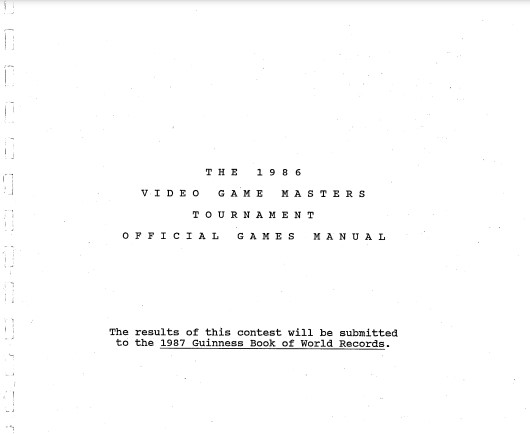
"The high score players were not required to give up their playing strategies to the competition as I did not," wrote Paul, "as they were considered hard earned through hours of playing and no one wanted to give the upper hand to their competition."
In explaining his approach to the tournament and use of game play techniques, Paul revealed that he employed what is called the "bridge out" tactic or glitch.
"I was doing great without a loss getting past 400k, 500k, 600k but still I was not able to do the bridge out tactic," recalled Paul. "Then finally at 800k I thought this may be my chance and I was able to get out of the weapons van at bridge out and get out to the side of the road for a few seconds and then continue my game."
In doing so, Paul unlocked the capacity to increase his average point yield and allow his Interceptor to live another day.
"I spent hours in the water and I was very lucky to have been sitting down while playing," Paul confirmed, "or I could never have finished this game successfully which took approximately 12 hours to complete my score of 9,512,590."
In explaining his use of the technique, Paul pointed to the rule book for the Video Game Masters Tournament. For decades, the rule books used in the 1980s were lost to the community, but beginning in 2011, the 1984 and the 1986 VGMT Manuals were recovered and digitized for community interest. In contrast to the contemporary rule set for Spy Hunter, the VGMT manual cited two techniques or glitches that were banned from competition, and the bridge out technique was not one of them.
A NEW CHAMPION
Although community reaction to Paul's post was mixed, his decision to step forward and clarify the conditions of his gameplay served as a critical and positive intervention, permitting Twin Galaxies to adjust the leaderboard for both glitch and non-glitch play while affording present and future gamers the chance to compete on the same footing as Paul for anyone interested in trying to top his 35 year old record. At the same time, it shone a spotlight on the efforts TG's newest Spy Hunter expert, whose work was a critical catalyst in bringing this long-standing conundrum to a close.
"I compiled a huge file of research about the old score and the events surrounding it," Tim said, "which really helped make the argument that the aforementioned glitch had to have been used to achieve such a high score in Spy Hunter."
And while there's a great degree of satisfaction in solving a 35 year old mystery, Tim can lay claim to an equally gratifying achievement: an undisputed world record of 1,478,555 points on the non-glitch Spy Hunter leaderboard.
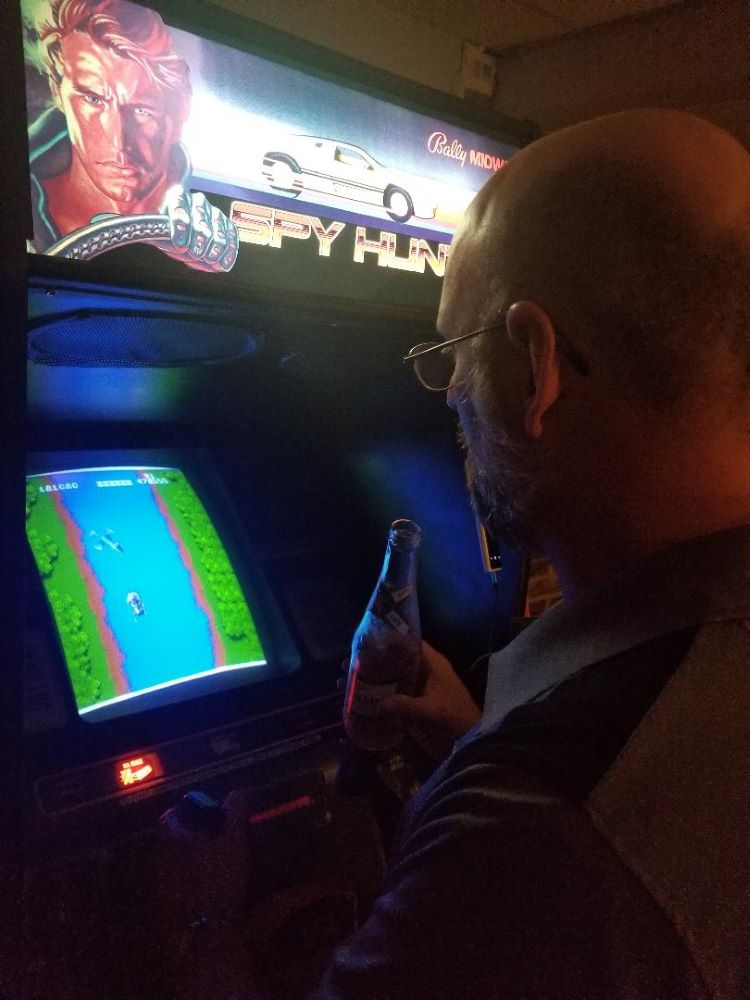
"The fact that I and others were able to prove the weapons van glitch or bridge-out cheat was used to achieve this score is the main reason I currently have the Spy Hunter record," he acknowledged. "Others may successfully topple my record and I may do so myself. We'll have to wait and see what the future holds in that regard."
So while Tim may have slipped back into a more regular routine, spending time with his boys competing for high scores on the Arcade1Up cabinet or settling down for some console games, he still finds himself back in front of Spy Hunter - looking for more techniques to learn, and more secrets to unlock.
Maybe there's a bit of John le Carré in Tim after all.
Once a spy, always a spy.
To see Tim's world record run, check out his submission video in the TG Records Archive







